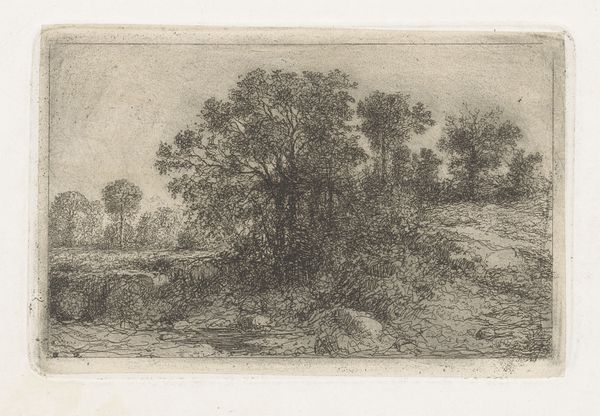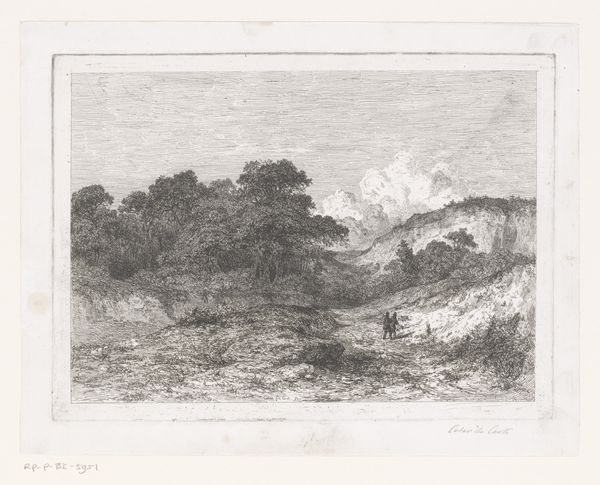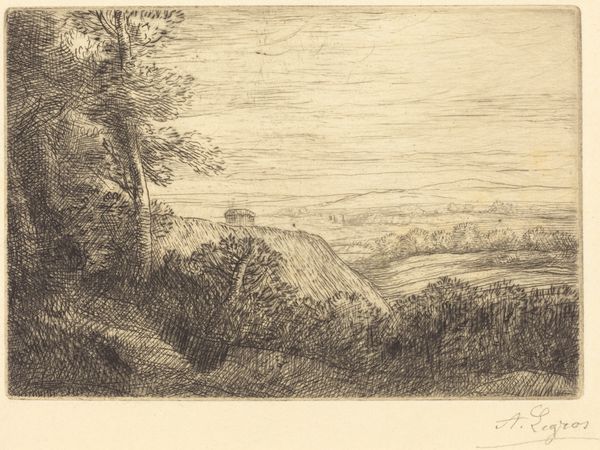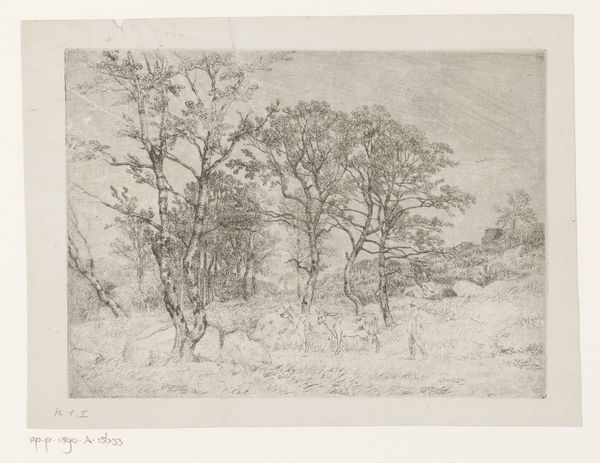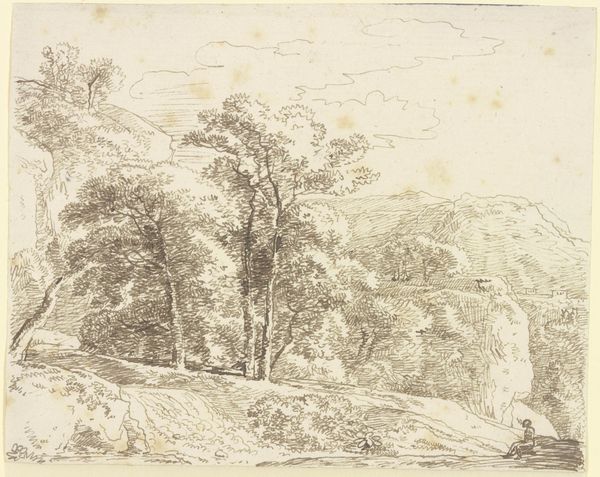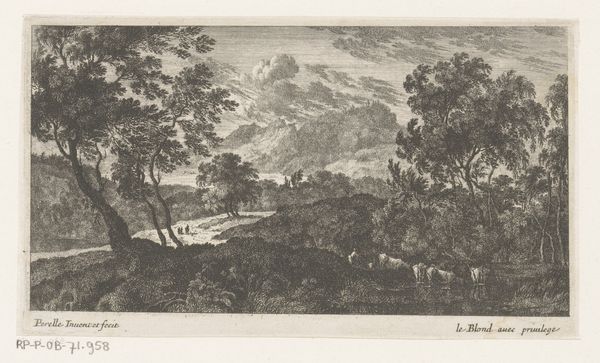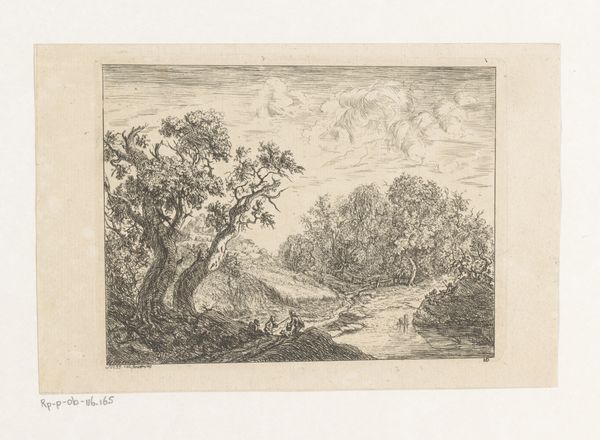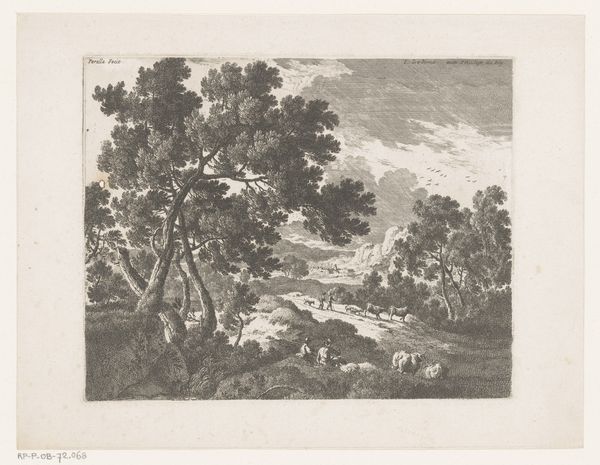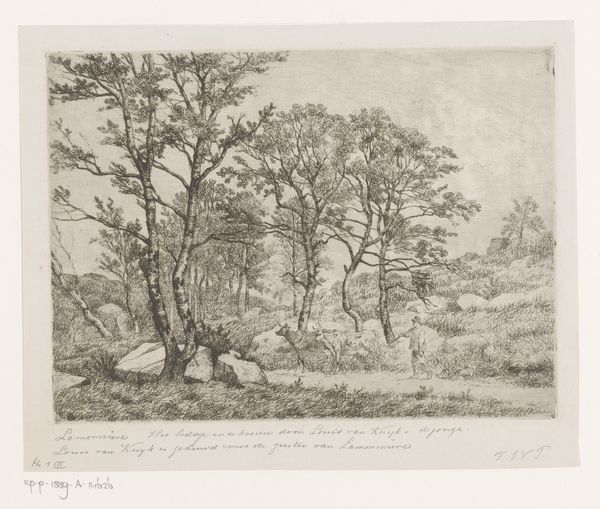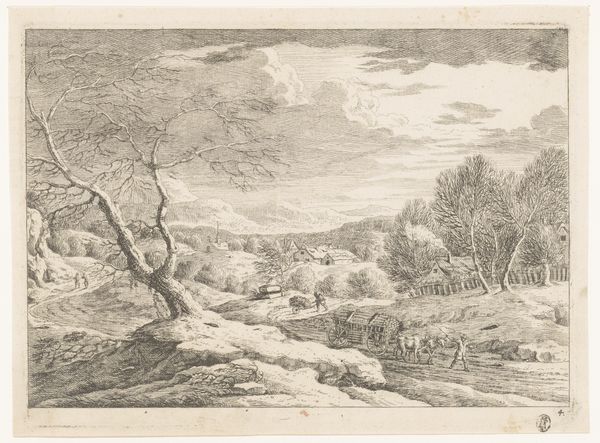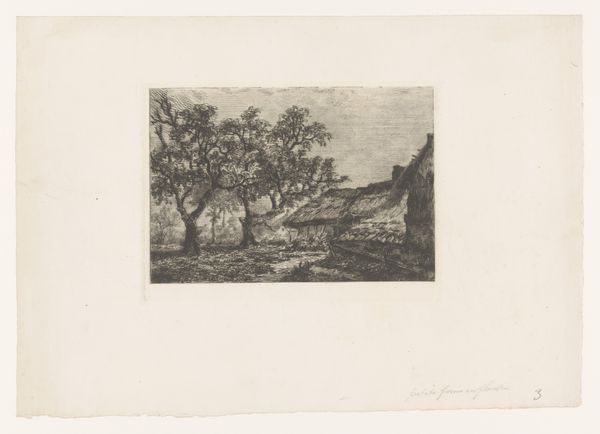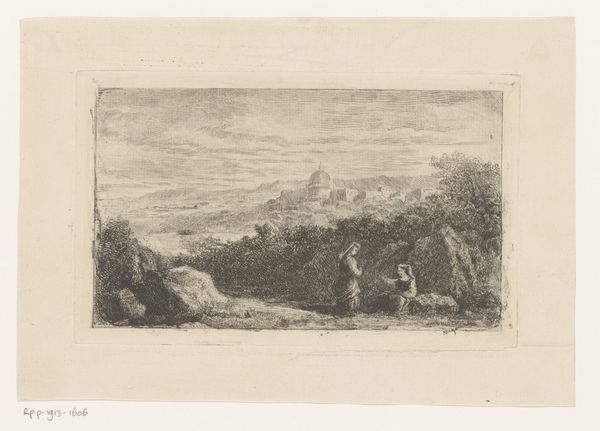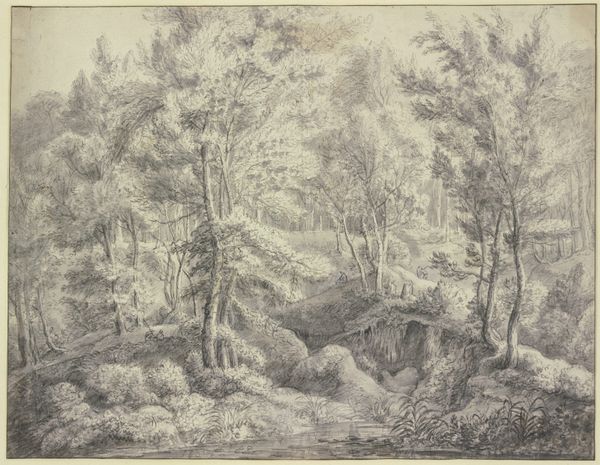
Dimensions: height 300 mm, width 418 mm
Copyright: Rijks Museum: Open Domain
Curator: Here we have Jan Fekkes' "Heide bij Laren," created in 1916 using graphite. Editor: My first impression is one of quiet desolation. The monochrome palette and skeletal tree convey a somber, almost barren landscape. Curator: Indeed. Consider the context; this drawing was made during the first World War. Was the artist responding to a climate of loss and uncertainty? We need to examine its relationship to broader cultural anxieties of that time. Editor: That’s insightful. I was thinking more about the graphite itself, and Fekkes’ process. Notice the varying densities of shading, the textural qualities he achieves with a relatively simple material. It emphasizes the physicality of the heath landscape. Curator: Precisely. Laren was, at the time, becoming a site of encounter for many artists in the Netherlands, so maybe his choice in landscape is pointing to a trend of national identity at the time? What type of individual could traverse the terrain? Editor: Fascinating point. It draws attention to how Fekkes employed what was likely considered a humble medium—graphite—to depict this culturally charged space. Was he challenging academic art world perceptions of appropriate subjects and materials? Curator: Possibly. Or he’s engaging a local cottage industry; creating art for and of a regional consciousness. That location likely influenced sales or trades for survival as well, particularly in that war climate we were discussing earlier. Editor: It prompts you to imagine the conditions under which Fekkes was working. Where he sourced his graphite from. What was his relationship to the land and to his immediate surroundings? The image speaks so much of his socio-economic background too, particularly through what he created. Curator: These sorts of details enrich the social, cultural, and economic history, which inevitably contributes to the creation of such powerful artwork. A perfect reminder that no piece exists in a vacuum. Editor: Absolutely. And a reminder that every landscape, even one rendered in seemingly simple graphite, is laden with layers of material significance.
Comments
No comments
Be the first to comment and join the conversation on the ultimate creative platform.
